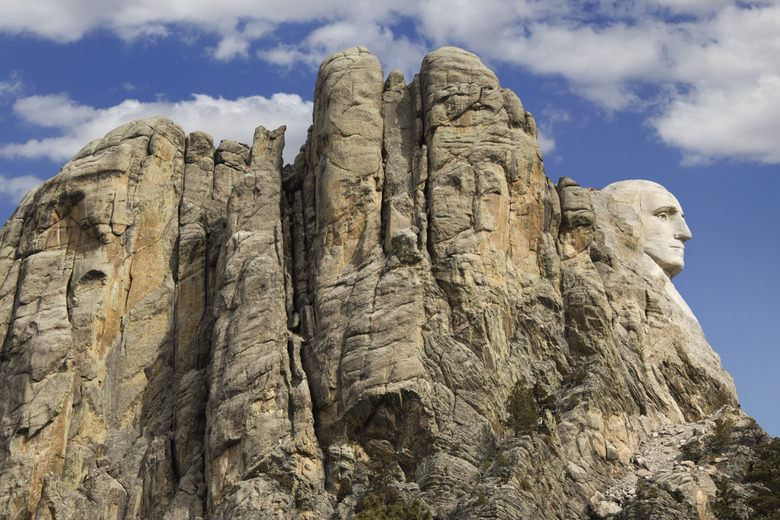What Is Unloading And How Does It Contribute To Weathering?
Unloading is the removal of great weights of rock or ice that lie on the surface. This may happen through rising temperatures that melt ice sheets; erosion by wind, water or ice; or tectonic uplift. The process releases pressure on underlying rocks and causes them to expand upward and crack at the surface. As a result, greater areas of rock are exposed to mechanical and chemical weathering.
Pressure-Release Jointing
Pressure-Release Jointing
Huge pressure releases can occur when layers or rock or ice that lie on top of another rock layer are eroded. The lower rock expands as the pressure falls and fractures occur along lines of weakness close to the surface. These fractures, called joints, can run parallel or slightly curved to the surface of the land and loosen sheets of rock whose thickness varies up to tens of meters. On a large scale, these can resemble onion layers and are called exfoliation joints
Internal Jointing
Internal Jointing
Joints can develop within a buried body of rock prior to unloading. Igneous rocks such as granite, basalt and marble (the product of molten limestone) contract as they cool. Internal stresses accumulate, creating lines of weakness that develop into cooling joints. These joints often develop perpendicular to the rock's surface and are sometimes accompanied by chemical changes in its minerals. Unloading exposes these joints, cutting through the surface sheeting joints and creating slabs of rock. The most spectacular examples are inselbergs, isolated slabs of granite that appear like islands in a landscape and become valuable habitats for many species.
Mechanical Weathering
Mechanical Weathering
Mechanical weathering pushes apart all joints in the exposed rock and breaks it into smaller pieces. Ice is a major weathering agent. Water expands 9 percent as it freezes and creates large forces that push apart joints on a rock's surfaces. Root and vegetation growth exert the same pressure. Mining and quarrying by humans is also an example of mechanical weathering that would not be possible without the exposure of jointing in rock caused by unloading.
Chemical Weathering
Chemical Weathering
Chemical weathering decomposes rock minerals exposed at the surface. Unloading and the breakup of a rock's surface into separate slabs and stones create a larger surface area for chemical attack by oxygen and acidic compounds in rainwater, soil or the atmosphere. Rock minerals are not chemically stable on the surface of the Earth because they were formed within the crust at higher temperatures than those at the surface. Olivine, a common mineral in basalt, reacts with oxygen to produce hematite, a red brown iron oxide. Feldspars, the Earth's most abundant silicate minerals, react with water to produce clay.
Cite This Article
MLA
Kielmas, Maria. "What Is Unloading And How Does It Contribute To Weathering?" sciencing.com, https://www.sciencing.com/unloading-contribute-weathering-5026/. 24 April 2017.
APA
Kielmas, Maria. (2017, April 24). What Is Unloading And How Does It Contribute To Weathering?. sciencing.com. Retrieved from https://www.sciencing.com/unloading-contribute-weathering-5026/
Chicago
Kielmas, Maria. What Is Unloading And How Does It Contribute To Weathering? last modified March 24, 2022. https://www.sciencing.com/unloading-contribute-weathering-5026/
